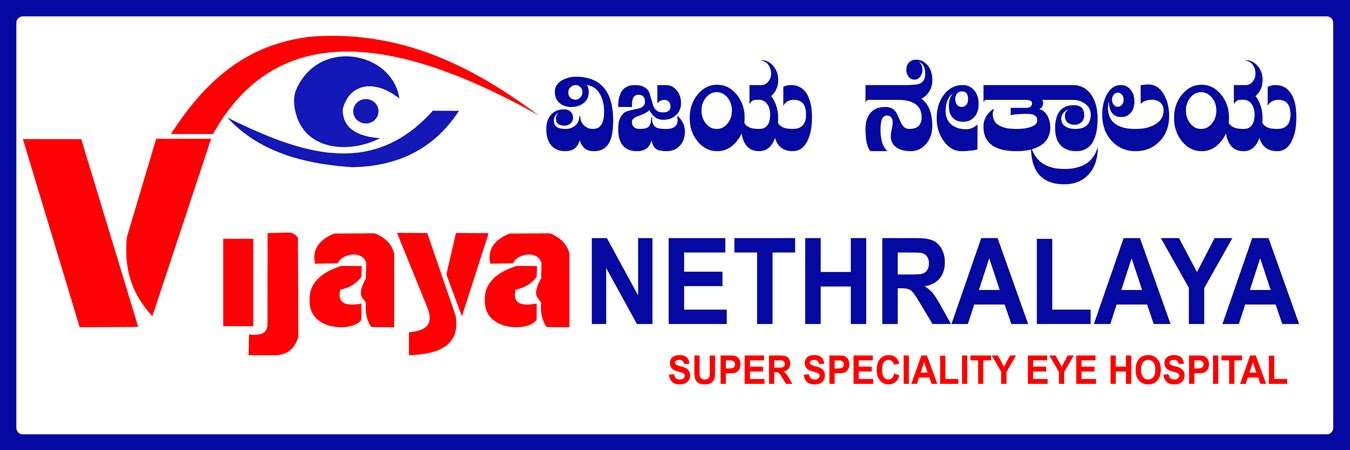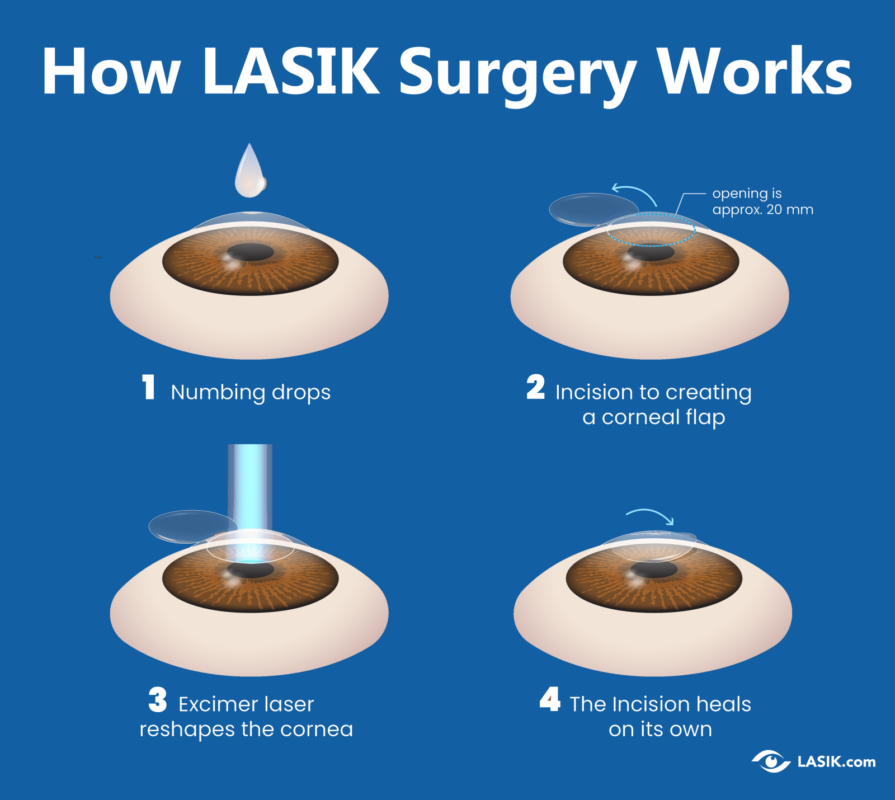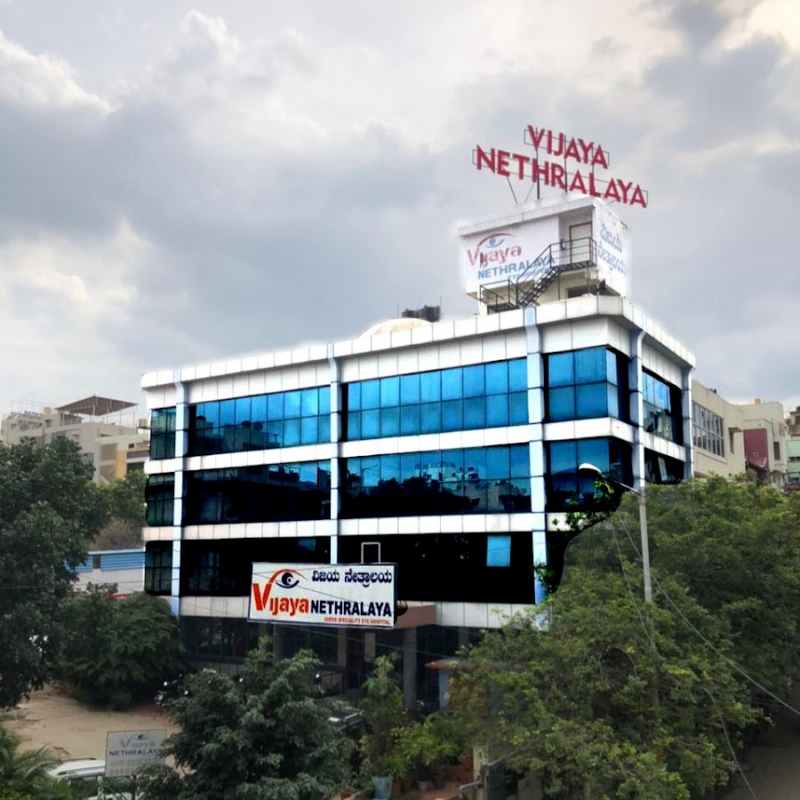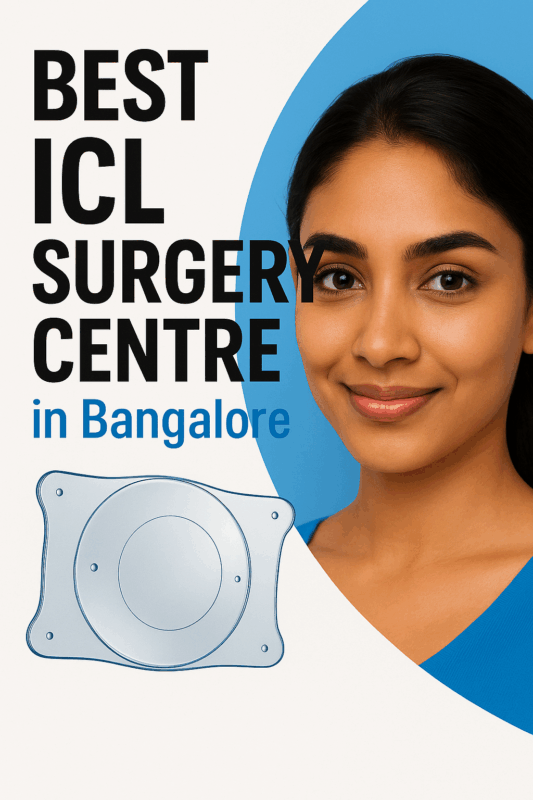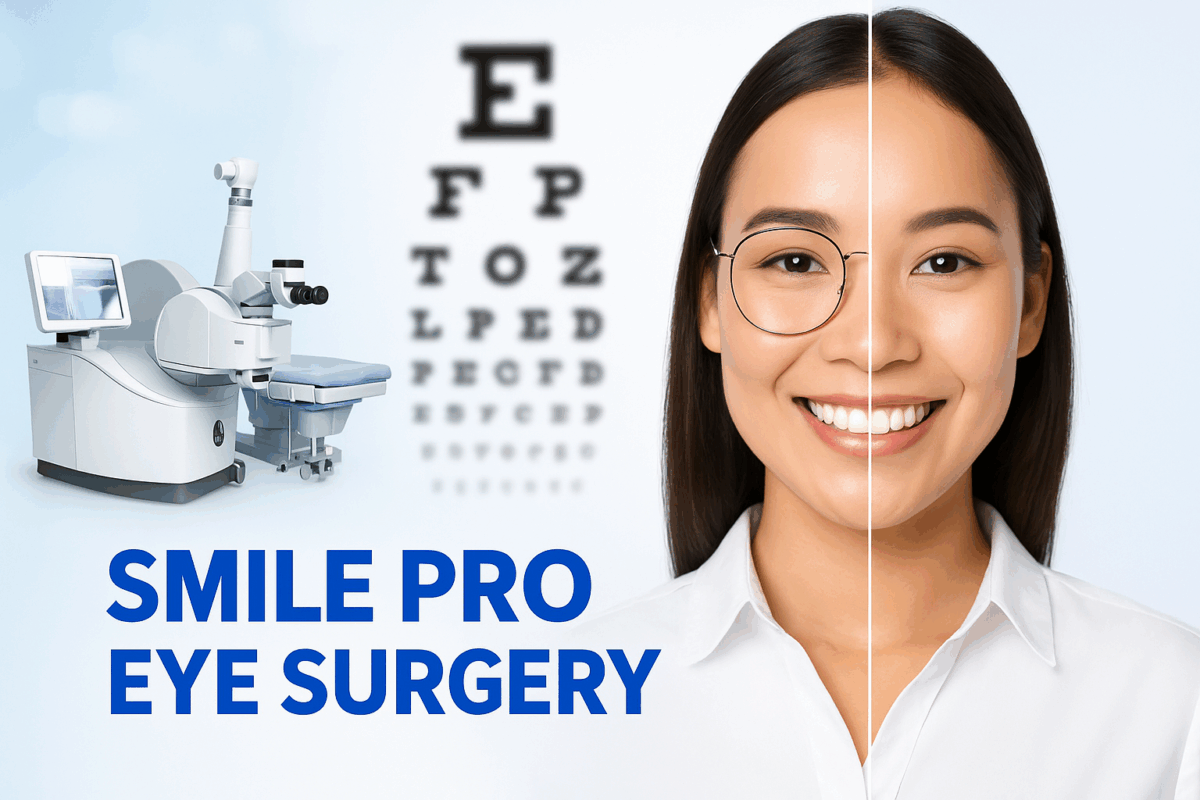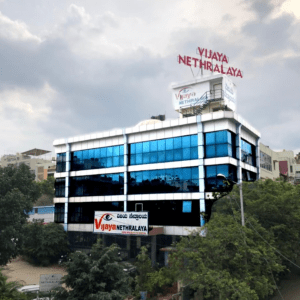Introduction
Laser eye surgery has revolutionized vision correction, providing a permanent solution for individuals who wish to reduce or eliminate their dependence on glasses and contact lenses. Using advanced technology, these procedures offer improved visual clarity and enhance overall quality of life. In this guide, we will introduce the different types of laser eye surgery, highlighting their benefits, costs, recovery process, and addressing frequently asked questions to help you make an informed choice.
What Is Laser Eye Surgery?
Laser eye surgery is a procedure that reshapes the cornea using a laser to correct vision problems such as:
- Myopia (Nearsightedness): Difficulty seeing distant objects.
- Hyperopia (Farsightedness): Difficulty seeing nearby objects.
- Astigmatism: Blurred vision caused by an irregular corneal shape.
- Presbyopia: Age-related loss of near vision.
This procedure improves clarity, sharpness, and overall vision by allowing light to focus properly on the retina.

Types of Laser Eye Surgery and Their Costs
There are several types of laser eye surgeries available, each with its own technique, advantages, and cost. The table below summarizes the most common options:
| Type of Surgery | Procedure | Approximate Cost (Per Eye) | Key Benefits |
|---|---|---|---|
| LASIK (Laser-Assisted In Situ Keratomileusis) | A flap is created in the cornea, reshaped with a laser, and repositioned. | $2,000 – $3,000 | Fast recovery, minimal discomfort, high success rate |
| PRK (Photorefractive Keratectomy) | The outer layer of the cornea is removed, then reshaped with a laser. | $1,500 – $3,000 | No flap complications, good for thin corneas |
| SMILE (Small Incision Lenticule Extraction) | A small piece of corneal tissue is removed through a tiny incision. | $2,500 – $4,000 | Minimally invasive, fewer dry eye symptoms |
| LASEK (Laser Epithelial Keratomileusis) | The corneal epithelium is lifted, reshaped with a laser, and repositioned. | $1,500 – $3,000 | Ideal for thin corneas, lower risk of dry eyes |
Detailed Explanation of Each Procedure
1. LASIK (Laser-Assisted In Situ Keratomileusis)
LASIK is the most widely performed laser eye surgery. The procedure involves creating a thin flap in the cornea, using a laser to reshape the underlying tissue, and then repositioning the flap without stitches.
Ideal Candidates:
- People with mild to moderate myopia, hyperopia, or astigmatism.
- Those with a stable vision prescription for at least a year.
Pros:
- Quick recovery (24-48 hours).
- Minimal discomfort.
- Long-lasting results.
Cons:
- Temporary dry eyes or glare sensitivity.
- Not suitable for very thin corneas.
2. PRK (Photorefractive Keratectomy)
PRK is a great alternative to LASIK for patients with thin corneas or those who engage in contact sports. Instead of creating a flap, the outer corneal layer is completely removed before reshaping the cornea.
Ideal Candidates:
- Those with thin or irregular corneas.
- Patients with mild to moderate refractive errors.
Pros:
- No risk of flap-related complications.
- Suitable for those with high-impact activities.
Cons:
- Longer recovery time (up to a week).
- More discomfort during the healing process.
3. SMILE (Small Incision Lenticule Extraction)
SMILE is a minimally invasive procedure that removes a small disc-shaped piece of corneal tissue through a tiny incision, avoiding the need for a flap.
Ideal Candidates:
- Patients with moderate myopia and mild astigmatism.
- Those seeking a less invasive alternative to LASIK.
Pros:
- No corneal flap, reducing complications.
- Faster healing with less risk of dry eyes.
Cons:
- Not suitable for hyperopia.
- Limited availability.
4. LASEK (Laser Epithelial Keratomileusis)
LASEK combines elements of both LASIK and PRK. Instead of removing the corneal epithelium, it is loosened, lifted, and repositioned after reshaping the cornea.
Ideal Candidates:
- Those with thin corneas or high prescriptions.
- Patients who want to avoid flap-related risks.
Pros:
- Preserves more corneal tissue than LASIK.
- Less risk of dry eye symptoms.
Cons:
- Longer recovery period.
- Temporary visual disturbances like glare and halos.
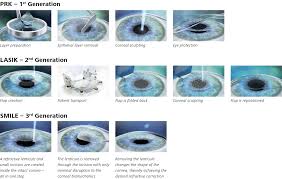
Conclusion
Laser eye surgery is a highly effective and safe solution for vision correction, providing long-term benefits and reducing the need for glasses or contact lenses. With options like LASIK, PRK, SMILE, and LASEK, patients can choose the best procedure based on their eye health and lifestyle needs. Consulting with an experienced ophthalmologist is crucial to determine the most suitable surgery for optimal vision improvement.
Author Details:
Dr. Sushruth Appajigowda holds a prominent position as a Cornea, Cataract, Glaucoma, and LASIK Surgeon in Bangalore. He serves as the chief Cataract and Refractive surgeon at Vijaya Nethralaya Eye Hospital, Nagarbhavi Bangalore. Renowned as one of the finest LASIK surgeons nationwide, he brings with him over 12+ years of experience across multiple LASIK platforms, including ZEISS, ALCON, SCHWIND, AMO, and Bausch and Lomb. Having successfully conducted over 5000 LASIK procedures, Dr. Sushruth holds the title of a Certified Refractive Surgeon and a Fellow of the All India Collegium Of Ophthalmology. Furthermore, he stands as a distinguished speaker at various National and International Forums, using his expertise to guide you in selecting the most suitable procedure based on your health requirements.

http://vijayanethralaya.com/link-in-bio/
FAQs:
1. Is laser eye surgery painful?
No, numbing eye drops are used to prevent pain during the procedure. Some discomfort or dryness may occur during recovery.
2. How long does laser eye surgery take?
The procedure itself takes about 20-30 minutes, with actual laser application lasting just a few seconds per eye.
3. What is the recovery time?
- LASIK: 24-48 hours for most daily activities.
- PRK/LASEK: About a week for vision stabilization.
- SMILE: A few days to a week.
4. Are the results permanent?
Yes, for most patients, results are long-lasting, though natural aging can lead to changes in vision over time.
5. Who is not a good candidate for laser eye surgery?
People with unstable vision, severe dry eyes, thin corneas, keratoconus, or eye diseases may not be eligible.
6. Can both eyes be treated at the same time?
Yes, most laser eye surgeries treat both eyes in one session.
7. What are the side effects?
Temporary dry eyes, glare, halos, or night vision issues may occur but usually improve over time.
8. Is laser eye surgery safe?
Yes, it is considered one of the safest elective surgeries, with high success rates when performed by experienced surgeons.
